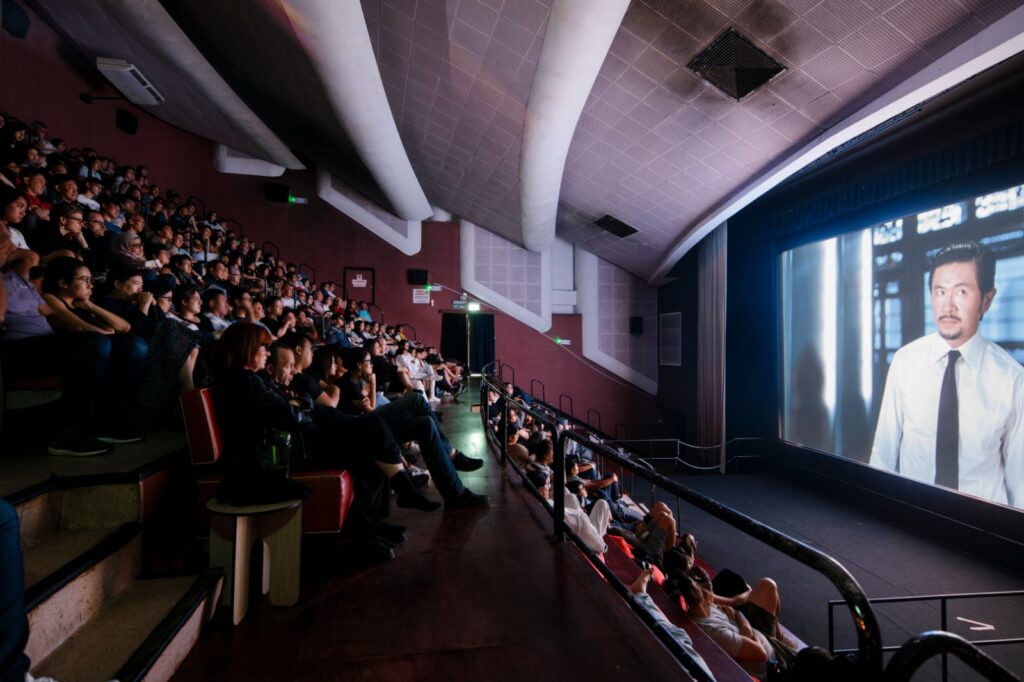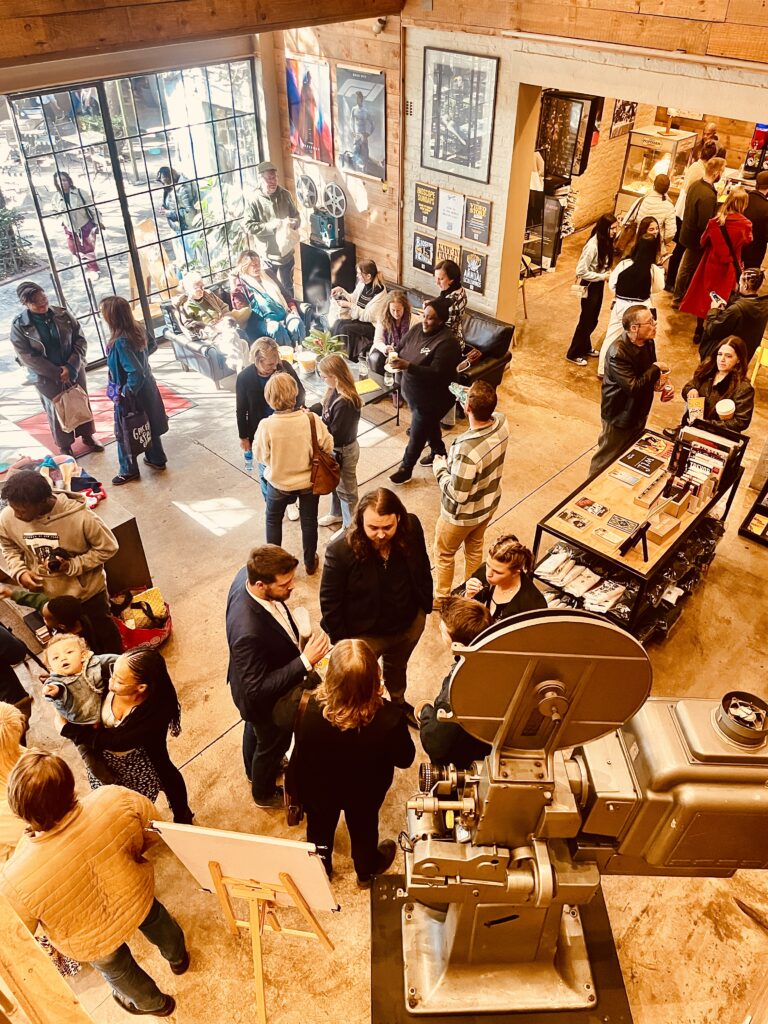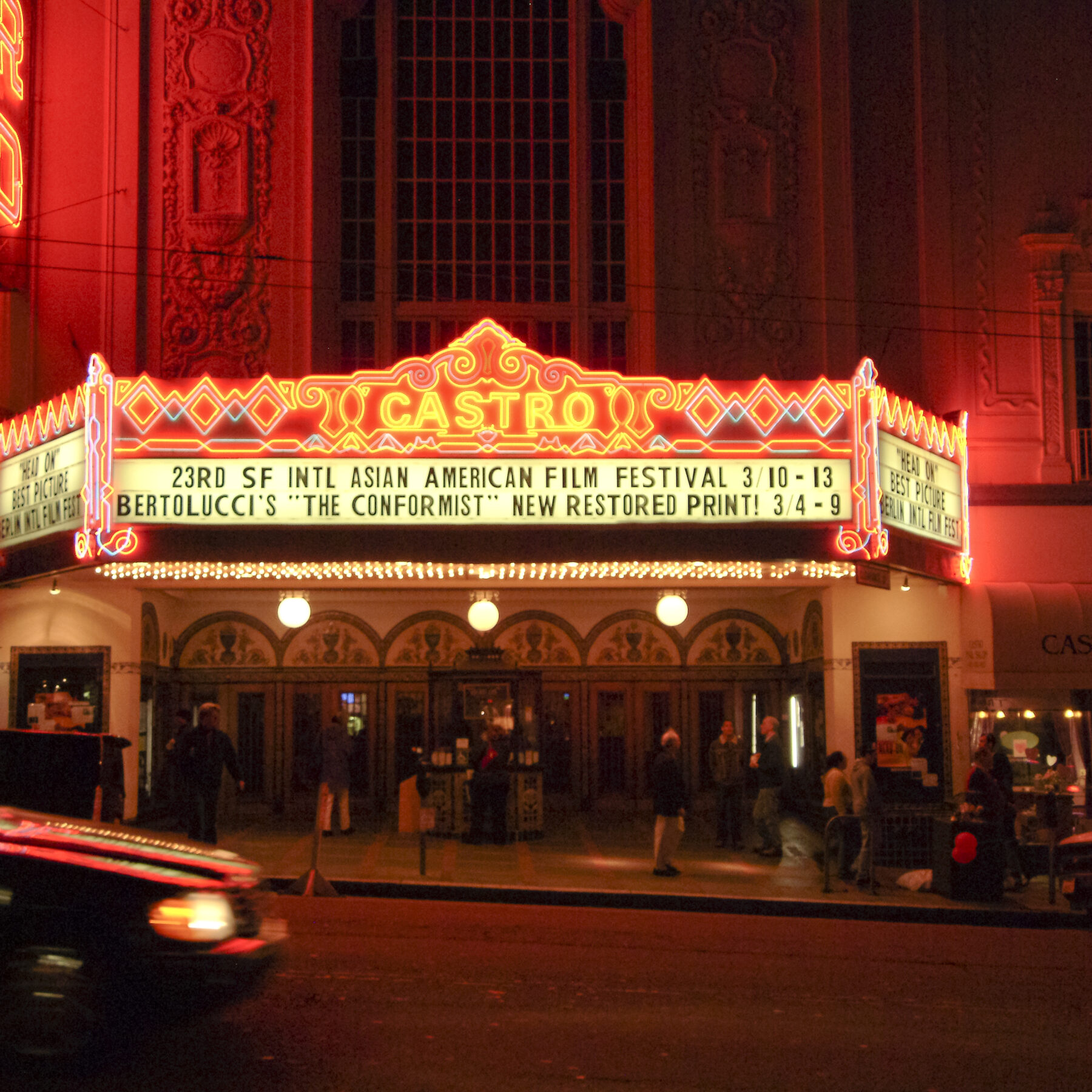In June 2024, Academy Award-winning filmmaker Guillermo del Toro posted an urgent plea to halt the closure of the beloved independent cinema, The Revue, located in Toronto’s Roncesvalles neighbourhood. After imploring mayor Olivia Chow to step in, he took matters into his own hands with a post on X: “If not you, WHO can help? Or HOW can I help?” While the 113-year-old cultural institution was granted an injunction to keep its doors open, Del Toro is just one voice amongst a chorus of many who believe in the unmatched value of independent arthouse cinemas.
In an era of convenient streaming platforms, the public moviegoing experience has become somewhat of an endangered species. Arthouse cinemas are an alluring intervention. Not only do they showcase the evolving artistic DNA of a city through hyper-local curation, but they also offer a crucial space to gather under the communal act of watching a story unfold.
These theatres are more than places for entertainment—in a Hollywood landscape that prioritizes generic blockbusters and big-budget franchises, they’re indispensable cultural guardians that champion cinematic diversity by opening their doors to independent, foreign and experimental films that would otherwise struggle to find an outlet. From giving voice to emerging filmmakers to preserving and presenting classics from around the globe, these spaces are vital for keeping the world of film vibrant.
The importance of arthouse cinemas stretches beyond the screen. Through the shared experience of watching an indie film, these spaces offer an antidote to an increasingly isolated world. Arthouse cinemas also foster community: they may host Q&As with creators and film experts, post-screening discussions and audience-engaging theme nights.
Nathalie Atkinson is a film critic who has been hosting an ongoing film series, Designing the Movies, at the Revue since 2016. Focusing on a film’s production design, art direction, costume and set decoration, each screening includes an expert introduction and functions as an invitation to cinephiles to reconsider influential classics like Metropolis, The Great Gatsby and Quadrophenia from a new perspective. “I especially love chatting with the audience after the movie, when the crowd spills out onto the sidewalk in front of the theatre,” she says. “It’s not live theatre, where the specific beats and granular details of performance can never be repeated, but those two hours together in the dark still shape a unique experience. The audience energy and movie play off each other, and every screening comes alive in a particular way.”
Here are five arthouse cinemas around the globe that demonstrate why film will always rely on its brick-and-mortar network.
The Projector (Singapore)
The team of Karen Tan, Sharon Tan and Blaise Trigg-Smith first entered the building that would later become The Projector on a whim. The abandoned cinema in Singapore’s Golden Mile Tower has been virtually untouched since the 1970s, with its original seats and lighting fixtures still intact. Since reopening its doors in 2014, it’s become an important countercultural hub in the region. Extending beyond film programming to host a range of events, including poetry slams, burlesque shows, wrestling matches, and community discussions, the space serves as a bridge between Singapore’s diverse creative communities.

Laputa Art Animation Theatre (Tokyo, Japan)
Japanese animation aficionados need look no further than Laputa nestled in Tokyo’s Asagaya neighbourhood. The eye-catching building, which resembles a character from one of the very films it screens, is named after the mythical floating island in Gulliver’s Travels, and later echoed in Studio Ghibli’s Laputa: Castle in the Sky. This intimate theatre has long championed world-class animation. Specializing in retrospectives of 1950s–60s Japanese film and spotlighting lesser-known animators, its screenings are often paired with rare and experimental shorts. A retro-futurist aesthetic, complete with wood-and-stone interiors, brings the whole experience together.
The Bioscope (Johannesburg, South Africa)
The Bioscope began with a handful of screenings but has since grown into a bedrock of prestige cinema in Johannesburg. Now located in 44 Stanley, a bustling design precinct, it screens everything from South African documentaries to global arthouse gems, and frequently pairs its screenings with food from local vendors and panel discussions. Community-oriented at its core, The Bioscope also hosts “knit-in” evenings, where attendees can sip a hot drink and knit with friends while a film plays in the background. Finished items are donated to The Baby Box Project, which collects gifts for newborns to be distributed to hospitals in and around the Johannesburg area.
Get the
Three from 3
newsletter
Join our global community of sharp, curious thinkers to receive a carefully curated email of the three most important things to read, see and do this week.
Listen and learn.
Tune into Third Culture Leaders, a podcast hosted by our co-founder and publisher, Muraly Srinarayanathas.
Explore how leaders skillfully navigate multiple cultural landscapes, leveraging their diverse backgrounds to drive innovation and change.

Cinema Akil (Dubai, United Arab Emirates)
In a city that has built an international reputation for constructing spaces of grand spectacle, Cinema Akil operates with a different intention. After hosting pop-up film events from 2015 to 2017, Cinema Akil opened its permanent warehouse space in 2018, following the installation of Dolby-grade projection and acoustics, as well as a flat seating plan, to ensure the space is multidisciplinary. In an interview with Gulf News, founder Butheina Kazim described an approach to programming that seeks to appeal to broad audiences: “Regional cinema is a key pillar. But at the same time we are not just focused on Arab films. Dubai is not just an Arab city. It is culturally closer to certain cities in South Asia than it is to Lebanon or Syria, so we want the programming to reflect that.”
Visum Mundi (Wageningen, Netherlands)
This sleekly designed theatre in Wageningen, an hour away from Amsterdam, was initially the site for the signing of the peace treaty between Dutch and German forces, marking the end of World War II. Now, Visum Mundi’s renovated interior blends top-of-the-line technology (the cinema was highlighted at the Cinema Vision 2030 conference at this year’s Berlin Film Festival, as a star example of European cinema innovation) with a flair for showcasing a diverse range of experimental Dutch filmmakers. The fight to preserve arthouse cinemas isn’t just about saving old buildings. It’s about protecting the future of film, championing diverse narratives, and ensuring that the magic of the communal moviegoing experience continues to enrich our lives. “It’s a platitude to say now, but in an age of human disconnection, the value of that shared experience, in participating alongside other people, is incalculable,” says Atkinson.

